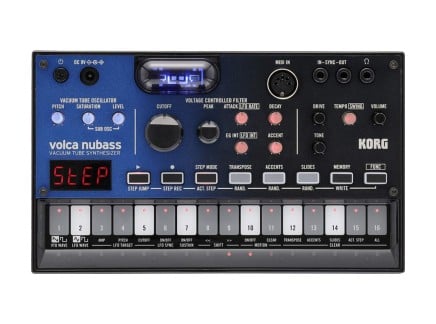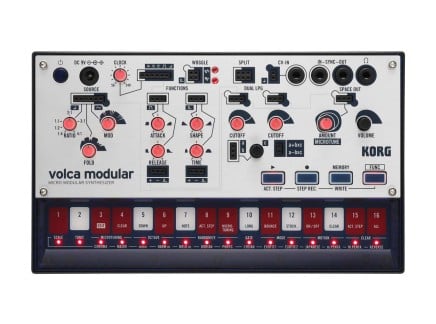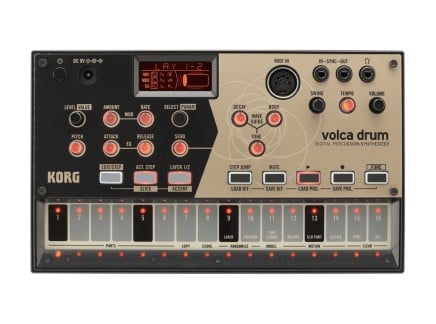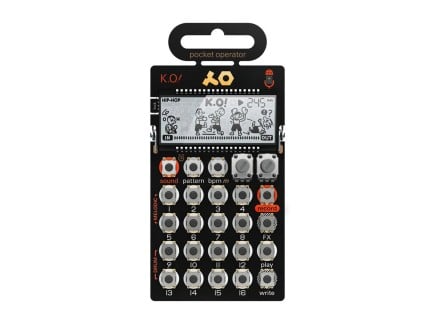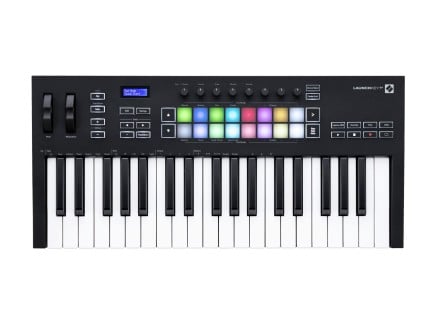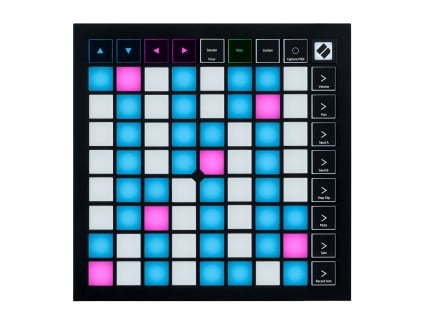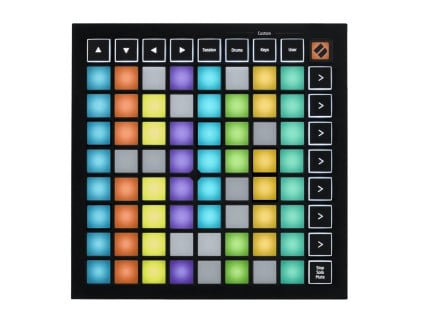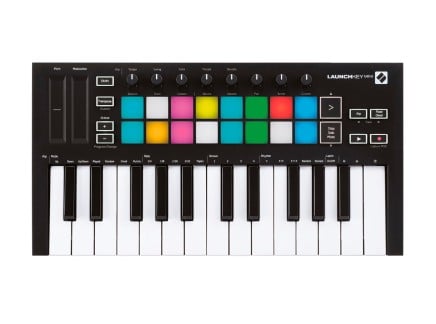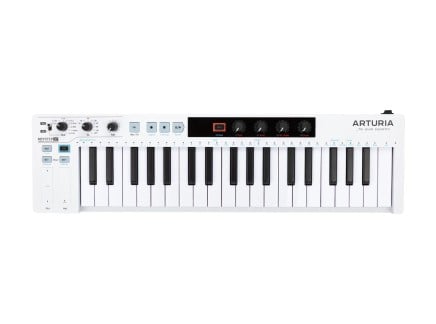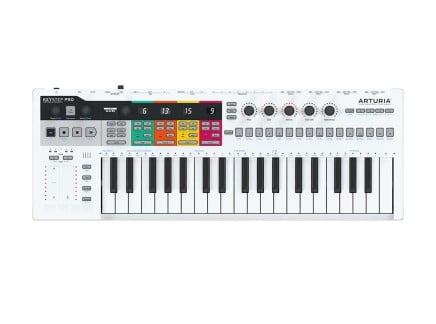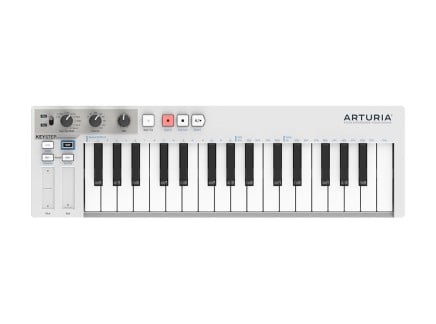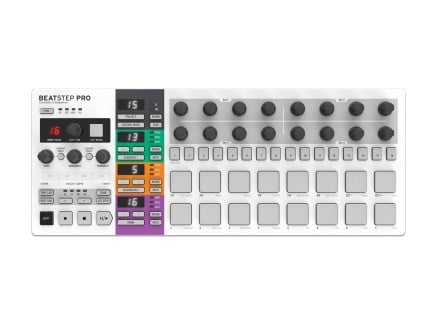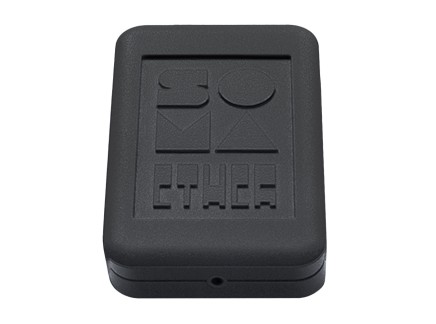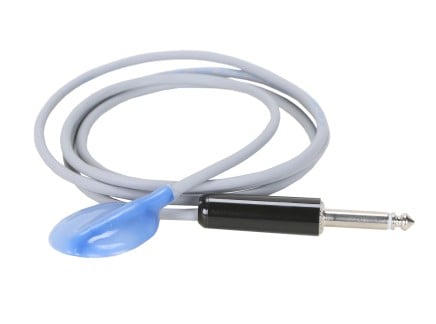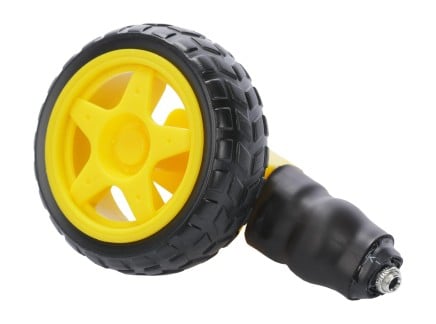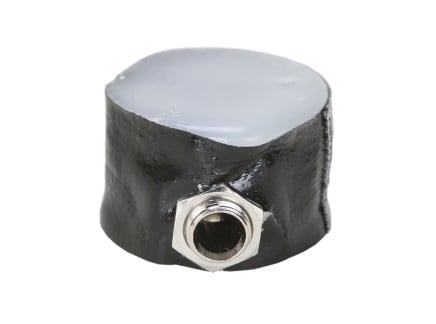As the end of the year approaches, we're taking a look back at some of our favorite gear. And while in prior years we've focused on the "best" gear released in this year, we're currently taking a step back and asking ourselves: what is the best gear that you can buy today, regardless of release date? Moreover, what is the best music gear if you're on a budget? For instance, what is the most interesting, inspiring, and flexible gear for making electronic music under $200? Whether you're looking for a gift for a friend or loved one, or just trying to track down your next toy, we suspect we've got something around that'll suit your needs perfectly.
"Best Of" lists are always subjective, of course—but let's take a look at some of our favorite gear under $200. This list includes a range of excellent deals for virtually any style of musician, from classic dance music producers to noise musicians, sonic experimenters, and tinkerers who are looking for a playful way of interacting with sound and music. This list includes a ton of gear that we at Perfect Circuit use to make music ourselves—and we're sure that there's something in here for practically every electronic musician.
A Sampling of Classic Flavors: Korg's Volca Series
The first of the Korg Volca line of synthesizers and drum machines were released in 2013 and hailed as an accomplishment upon release. This line of compact music-making machines are about the size of a VHS tape (remember those?) and pack a ton of power into their compact housing. The range of offerings is comprehensive and fits into any musical style—exploring everything from distorted acid basslines to classic FM, West Coast experimentation, physical modeling, and more.
One thing that connects all the Volcas together is the onboard sequencer with both pitch and motion controls. Every Volca has a built-in step sequencer with sync input and output, providing an easy way to chain multiple units together. Get a few Volcas running at the same time, connect them together, and get a whole track going, complete with rhythm, melody, and bass. All Volcas can run off batteries or an external power supply and feature both a built-in speaker and headphone output, letting you take your jams anywhere.
The most recent addition to the line is the Sample 2, which doubled the amount of memory available on the original and added USB connectivity for transferring samples. Slice, repitch, and rearrange samples on the fly and sequence these parameters to your heart's content. Use the built-in sounds, or fill to the brim with your own samples. It primarily functions as a rhythmic source, a sample-based drum machine, but it crosses the line into melodic sequencing with a little coaxing.
Or if sampling isn't for you, check out the Volca FM—taking inspiration from FM synthesizers from the 1980s and beyond, this is a complete three-voice FM synthesizer. It is fully compatible with DX7 program files and brings the classic metallic, and bell-like FM sounds to your fingertips. The six-operator architecture features 32 algorithms to craft the perfect sound with a simple knob and slider interface. Add another layer of texture to your sounds with the built-in lush-sounding chorus.
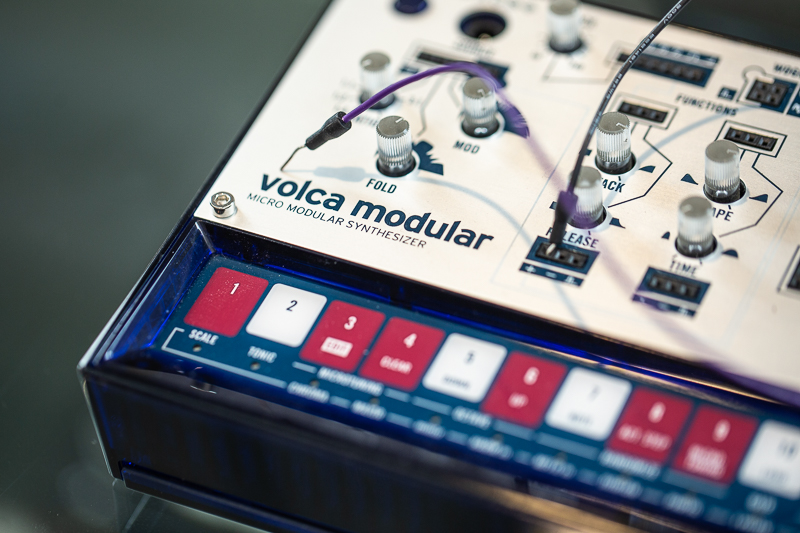
The Volca Modular is perhaps the most surprising addition to the Volca line. It retains the compact form factor of the other Volcas but fits an entire west-coast modular synthesizer complete with patch points. These allow you to change the signal flow as much as you please and even feature an input for connecting with modular devices that use 3.5mm jacks. The oscillator is a triangle wave oscillator with a secondary modulation oscillator and wavefolder for creating complex FM sounds, but not quite in the same way as the Volca FM—instead, it is inspired by classic, rare Buchla designs such as the Music Easel or 259 Complex Oscillator. A pair of function generators, a clock divider, and a random voltage generator named Woggle (inspired by the classic Grant Richter design) provide the primary modulation lanes to alter the synthesizer's sounds dynamically. A pair of low pass gates both affect the loudness of a sound and the timbre with slight filtering as the volume is reduced. The sequencer can also break out of the traditional western 12-tet system. It features robust microtonal sequencing options and a randomize function that adds a bit of inspiration if you're stuck on a sequence.
Although they may look like toys, there's serious power in the hood of these compact instruments. With a full range of options, they suit any number of musical styles. Once you get one, you'll want them all.
Tiny Grooveboxes: Teenage Engineering Pocket Operators
Ever since the release of their first line in 2015, Teenage Engineering's Pocket Operators have remained a favorite among musicians from all walks of life. These diminutive instruments reminiscent of calculators and early handheld video game systems continue to be an appealing choice for novice electronic musicians, experienced producers looking for a fun way to sketch ideas or incorporate new sounds into their tracks, or any creatively-inclined human looking for a fun way to play with their musical ideas. Over the years, Teenage Engineering has taken the opportunity to flesh out their Pocket Operator offerings, and now more than ever, there's something for everyone.
The original three instruments from the 10-series remain the most straightforward and affordable of the bunch. They're all capable of chaining together various 16-step sequences, and contain some clever punch-in effects on top of the sequences and a collection of characterful built-in sounds. The PO-12 Rhythm's punchy kits, the PO-14 Sub's heavy bottom-end, and the PO-16 Factory's versatility collectively form a fairly lo-fi ensemble with surprising presence when cranked through a PA system or studio monitors. Looking for some more specialized sonic spice? The 20-series adds some additional tricks to the PO sequencers and sound engines. PO-20 Arcade excels at creating chiptune sounds and rapid arpeggios like classic video games, while the noisy bursts from the PO-24 Office will add texture to any track. PO-28 Robot is a capable melodic synthesizer for crafting melodies with its quirky 8-bit sound engine.
Packing the powerful addition of sampling capabilities, the 30-series is the most powerful line of Pocket Operators yet. The percussively oriented PO-32 Tonic can sample and store several banks of drum kits, without sacrificing the hands-on sequencing capabilities of its predecessors. The ever-popular PO-33 K.O. combines the best of percussive and melodic sequencing potential, boasting eight tracks for each type of instrument and up to 40 seconds of total sampling time shared between all sounds. Circuit-bending aficionados may get a kick out of the PO-35 Speak, a vocal synthesizer and sampler that brings hacked Speak and Spells to mind.
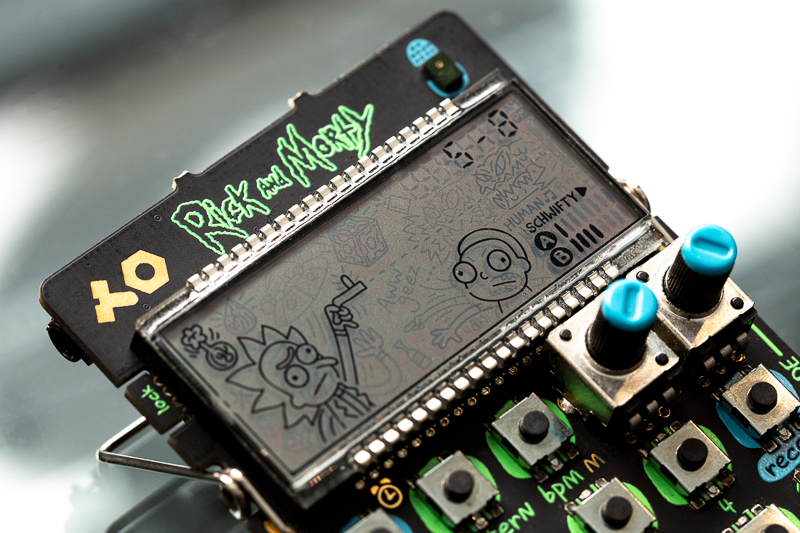
With their wide visibility and accessible price point, Teenage Engineering has also chosen to collaborate with a few popular franchises to offer some clever twists on their compact instruments in special, limited-edition packages. Last year we saw the release of the PO-137, a variation on the Speak with unique graphics and sounds from the interdimensional Adult Swim cartoon Rick and Morty, making it a perfect choice for the fan of synthesizers and comedy in your life. Just a few weeks ago, Teenage Engineering announced their latest joint Pocket Operator venture with Capcom, commemorating two of their most iconic video game franchises. Based on the K.O., the Street Fighter edition PO-133 comes loaded with a bunch of samples from the legendary fighting game series, specifically honing in on the character of the low-fidelity sounds of the early arcade consoles. Retro video game fans will also love the PO-128, a special Mega Man variant of the Robot. TE adjusted the 8-bit engines to channel the classic vibes of the early Mega Man games, with sounds as if they were coming straight from your old console!
Regardless of which Pocket Operator you find most appealing, there are enough options these days that any choice can fill a role in an existing music setup or be a great first instrument for someone just starting out. They might have a vaguely toy-like appearance, but don't underestimate their potential—these are serious instruments in their own right!
Affordable Performance Controllers: Novation Launch Series
If you’re shopping for someone interested in almost any facet of sound design or music production, you can’t ask for a better bundle than one of Novation’s Mk3 Launchkey series. Novation's Launchkeys have provided entry-level devices for controlling Ableton Live and other digital audio workstations for the better part of the last decade—these sleek USB keyboard/controllers provide all the tactile interface that a producer, musician or sound explorer could need to get started, 16 RGB velocity sensitive pads, 8 encoder knobs, full-sized keys that make playing a breeze, as well as a host of interesting compositional tools such as arpeggiators, sequence loopers, scale functions and transport controls. The Mk 3 units provide a noticeable improvement in quality from previous offerings, now sporting a DIN MIDI out for interfacing with other hardware, backlit buttons, and an updated keybed and RGB that feel responsive and wonderful to play.
The Launchkey series comes in multiple different sizes, but the Launchkey 25 and 37-key models offer a great balance of form and features. The Launchkey Mini 25 does strike a convincing argument for mini-keys and portability however, and shouldn’t be overlooked—it’s small enough to throw in a backpack, and sports the same feature set as its larger siblings.

Of course, if you're not a keyboardist, there's still a controller out there for you. For performers, DJs, and other creatives who use Ableton Live or other DAWs, Novation’s Launchpad has quickly become a classic. Originally released in 2009, the Launchpad redefined the idea of what a software controller could be, and over a decade later the Launchpad is more refined than ever. Compose full songs, sequence melodies and drums on the fly, or arrange and play full sets, it’s all possible from this beautiful little pad controller. All Launchpads offer complete control of Ableton Live from a grid of 64 pads that are now both pressure and velocity sensitive (with polyphonic aftertouch!) and feature RGB LEDs that match the clip color of Ableton’s grid view for easy navigation and clip-launching.
Launchpads now come in three sizes—the Mini, the X, and the Pro. The Launchpad Mini and X are ideal for beginners as they streamline creative processes and offer a unique take on interfacing with music production software, while the Pro offers all of those features, a few added bells and whistles for advanced users, and TRS MIDI. One of the most appealing features of the Launchkey and Launchpad series for newcomers is the bounty of impressive software bundled with each of the controllers. Included with all the Launchkeys are Ableton Live Lite, Serato Sample, and plug-ins from AAS, XLN, and Spitfire Audio. Launchpads come with Ableton Live Lite, plugins from AAS, Softube, and a two-month subscription to Splice’s sample library service, guaranteeing that anyone who receives a Launchpad this holiday season is primed for take-off.
Intuitive Keyboard Control: Arturia Keystep 37
Perhaps one of the most essential tools for any musician working with electronic sounds is the MIDI controller—most commonly a MIDI keyboard. Synth Lord knows there are many MIDI keyboards out there, and choosing the right one can easily cause the infamous choice paralysis. Alongside the Launchkey series described above, Arturia's line of Keystep controllers have proven to be go-to tools for many modern musicians. As the Keystep Pro righteously competes with heavy titans of the MIDI controller world, the portable Keystep and the newest in the family, Keystep 37 occupy their own niche altogether, providing a great set of features in a portable size...and at a ridiculously affordable cost.
Arturia released Keystep 37 earlier this year—and it maintains the thoughtfully flexible I/O from prior models, offering USB, MIDI, and CV/Gate connections. And while on the surface it may look like Arturia has merely added five extra keys to the original Keystep, there is more to the story than that. The exciting changes are implemented in the function set of the keyboard itself.
Keystep 37 includes a robust Chord mode, which provides an intuitive means to construct complex harmonic progressions with a minimum amount of key presses. Specifically, a single key can store up to 12 chord voicings. The controller also includes a Scale mode, which quantizes each note played to the nearest note in the selected scale. Oh, and yes, you can create and save your own custom scales. Finally, Kesytep 37 is equipped with a unique Strum mode with dedicated controls for note velocity, spacing, and duration. The mode lets you emulate the natural response of stringed instruments like guitars, mandolins, and harps. On top of that, Keystep 37 also includes a convenient BPM display, and 4 encoders with 4 banks of customizable MIDI CC mappings.
No matter what you are looking for—your first MIDI controller or something portable to take on the road, or maybe something that can interface with both software and hardware, or just an affordable sequencer or all of these things together—Keystep 37 will not disappoint.
Noise All Around You: SOMA's Ether
While most electronic musical instruments are designed to keep you inside your studio, it is refreshing to encounter a tool that, by its very design, inspires you to take it out, and explore the sound of the environment. And it can be even more fascinating if it is capable of revealing sounds that are widely present, yet largely hidden from us. Ether from SOMA Laboratories is exactly that kind of tool. Described as anti-radio, Ether tunes into the vast frequency space between the narrow bands of radio channels, amplifying the ocean of noise produced by radio and electromagnetic waves.
Ether is equipped with two antennas—a magnetic one that responds especially well to the rotation of the device, and an electric one printed directly on the PCB of the unit. There are also two antenna pins on the unit that allow you to expand the receiving range of the unit by connecting them to external antennas, that can be as simple as your own body or any other conductive surface (the larger the better). As both pins are connected to different parts of the circuit, using either or both simultaneously will greatly vary the sounds produced. Unlike traditional electromagnetic pickups that work really well in close proximity to the source, Ether is extremely sensitive and excels in larger environments like city streets, trains, buildings, etc. Of course, it will still amplify the noise of the power supply if placed next to it, but as you can imagine, it is capable of so much more than that.
If you are familiar with other instruments from SOMA Laboratories like their flagship Lyra-8 synthesizer and mind-boggling Pulsar-23 drum machine, you know the unique and close to mystical character to their instruments. Ether is no exception to this, and it presents a budget-friendly entry point to the SOMA universe. Its sturdy construction, extremely low weight, and power efficiency (it can run on two AAA batteries for at least 300 hours) make it a perfect companion tool for an adventurous musician—providing new sonic inspiration around literally every corner.
Noise Within Everything: Crank Sturgeon
Contact microphones are a simple way to observe sound on a micro-level. Connect them to any everyday object, and they unlock a world of sound that humans cannot normally perceive. Contact mics amplify the vibrations of an object instead of sound vibrations through the air like a standard microphone. They often use small flat discs of metal with piezo-electrical crystals to pick up vibrations, connected to a jack or plug to connect to a mixer or amplifier. Crank Sturgeon is a staple among collectors of lo-fi contact microphones and related instruments. His designs grace the collections of many experimental artists and musicians who want a simple way to tap into the world's vibrations around them.
Crank's Classic Contact Mic features a silicone-coated piezo element connected to a Switchcraft plug. The silicone protects the delicate piezo and makes it simple to secure an object using tape or a clip. Connect the plug to a mixer and place the microphone on an object's surface and hear the sounds contained within. The Immersion Sturgeon takes the basic silicone-coated contact microphone and adds additional protection to create a waterproof contact microphone. Now not only can you hear the sound of vibrating objects, but objects within water. Or freeze the contact mic in water and hear the cacophony of melting ice with the cracks and pops not normally heard by observers. Both these microphones also come in XLR versions in addition to Switchcraft 1/4" plugs.
Not only does Crank Sturgeon make contact microphones, but he also makes instruments that use contact microphones in them. The Perpetual Spring Device is simply a metal tin with springs attached with a contact microphone inside. Moving the springs causes the tin to vibrate and pick up the vibrations. This may sound basic, but it can make some serious sounds with some creative playing and manipulation. Taking this simple idea a step further, the Multi-Plunk Pocket Gamelan adds longer strings, wires, alligator clips, and an external contact microphone to bring other sounds into the system. Pluck the springs, bow the wires and strings, attach the microphone to a resonant device and make expressive sound design experiments.
Use any of these contact microphones or contact microphone-based instruments on their own or with external effects. Great with delay, reverb, or distortion, additional effects really add another layer of life to the sounds. These contact mics are a simple way to start creating and exploring a deeper world of sounds. Attach them to resonant objects like glass or cymbals, put them in a box, fill it with rocks and shake it around, or just attach one to your acoustic guitar! The possibilities are endless.
Affordable Dance Classics: Behringer TD-3 + RD-6
With every wave of announcements regarding Behringer's reimaginings of classic electronic instruments, much of the synth world lights up in excitement and anticipation. Rightly so, many of the vintage instruments being revisited by Behringer hold iconic places in music history, but that often correlates with a substantial price tag on the used market—not to mention any additional hidden costs in maintenance and repairs. Furthermore, many of the technical aspects of these instruments and devices are outdated, with some predating MIDI and utilizing protocols like DIN-Sync, which was eventually overshadowed by MIDI Clock and other timing systems. Behringer recognizes the importance of channeling the spirit and sonic character of every instrument they're developing, but they have a keen sense for adding features and quality of life improvements along the way to make their versions of these instruments play well with any member of a current electronic music production or performance setup.
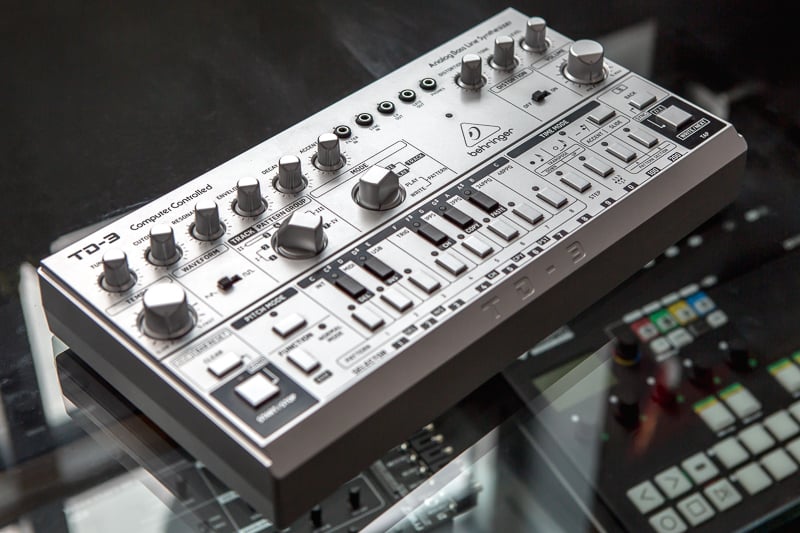
Among Behringer's ever growing synthesizer catalog, it's hard to find a better value than the TD-3 bass synthesizer and RD-6 drum machine. Anyone savvy with synth history might recognize that these bear a strong resemblance to Roland's iconic TB-303 and TR-606, and they'd be totally right! These groovy little boxes effectively channel the sounds and workflows of the originals, with a few clever twists and additions for music makers in 2020.
The TD-3 is as much of an acid machine as its ancestor, but for a mere fraction of the cost of what an original 303 is going for on today's vintage market. It contains the same diode-ladder filter with squelchy resonance, glide, and accent functionalities, but the sequencer has been greatly expanded and revamped, offering 250 user slots and further capability afforded by pattern chaining and transposition. TD-3 also rewards modular users that get comfortable with its workflow, providing CV note and gate outputs to patch in their system to play along. It's also fully MIDI-capable through traditional 5-pin connectors or USB. For a more personalized touch, the TD-3 is also available in a wide range of colors, ranging from the classic silver and minimal black to bold translucent green, blue, and more.
Behringer also offers an updated version of the 303's rhythmic companion in the form of the RD-6. Like the original 606, this drum machine packs eight analog drum voices into a compact box, but is similarly updated to easily drop into anyone's music hardware setup. An onboard distortion effect adds crunch and punch to the main output for hard-hitting rhythms, and includes individual outputs for each voice group—a common modification performed on the TR-606, built-in to the RD-6 straight from the factory. Similarly to the TD-3, the RD-6 provides some handy CV connectivity for those with other grooveboxes or modular gear, offering Sync I/O, trigger outputs from the Toms, and dedicated Start/Stop trigger input for controlling the sequencer transport. Just like its bass synth counterpart, RD-6 is available in a full rainbow of colors.
The music tech word is bustling and busier than ever—and now, it's possible to build an incredible setup on a budget. Whether you're making acid, ambient music, experimental noise, or just looking to tinker with sound on your day off, there's a countless amount of gear that could fit your purposes. So whether you're looking for a gift for a loved one or trying to pick out your own next toy, your options are wide open.



